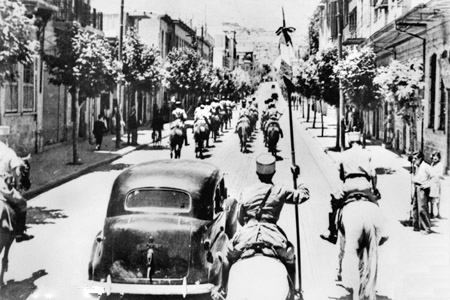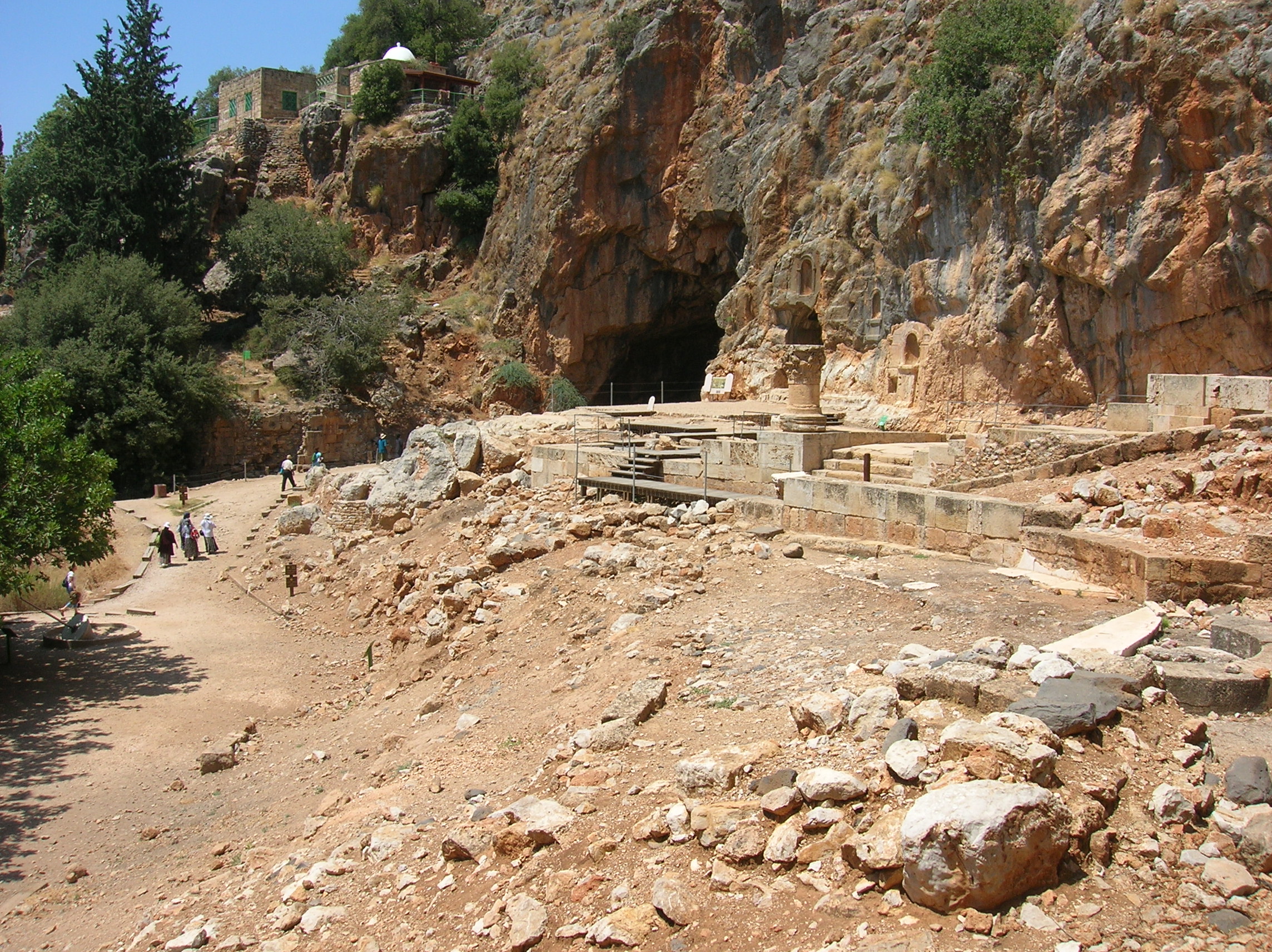|
Bariqa
Bariqa ( ar, بريقة, also spelled Buraykah or Breikeh) is a village in southwestern Syria, administratively part of the Quneitra Governorate, south of Quneitra, in the Syrian-controlled portion of the Golan Heights. Nearby localities include Beer Ajam to the north, Naba al-Sakhr to the northeast, al-Harra and Namer to the east, al-Suwaysah and Jasim to the southeast and al-Rafid to the south. According to the Syria Central Bureau of Statistics (CBS), Bariqa had a population of 371 in the 2004 census.General Census of Population and Housing 2004 . Syria Central Bureau of Statistics (CBS). Quneitra Governorate. Its inhabitants a ... [...More Info...] [...Related Items...] OR: [Wikipedia] [Google] [Baidu] |
Circassians In Syria
The Circassians in Syria ( Circassian: Сирием ис Адыгэхэр; ) refers to the Circassian diaspora settled in Syria (then part of the Ottoman Empire) in the 19th century. They moved to Syria after the Circassian genocide following the Russo-Circassian War. While they have become an increasingly assimilated part of Syrian society, they have maintained a distinct identity, having retained their Adyghe language (in addition to Arabic), their tribal heritage and some of their traditional customs. Prior to the Civil War in Syria, the Circassian population was estimated to be around 100,000 .A Country Study: Syria: Chapter 2 - The Society and Its Environment: Others '' |
Golan Heights
The Golan Heights ( ar, هَضْبَةُ الْجَوْلَانِ, Haḍbatu l-Jawlān or ; he, רמת הגולן, ), or simply the Golan, is a region in the Levant spanning about . The region defined as the Golan Heights differs between disciplines: as a geological and biogeographical region, the term refers to a basaltic plateau bordered by the Yarmouk River in the south, the Sea of Galilee and Hula Valley in the west, the Anti-Lebanon with Mount Hermon in the north and Wadi Raqqad in the east. As a geopolitical region, it refers to the border region captured from Syria by Israel during the Six-Day War of 1967; the territory has been occupied by the latter since then and was subject to a de facto Israeli annexation in 1981. This region includes the western two-thirds of the geological Golan Heights and the Israeli-occupied part of Mount Hermon. The earliest evidence of human habitation on the Golan dates to the Upper Paleolithic period. According to the Bible, an Am ... [...More Info...] [...Related Items...] OR: [Wikipedia] [Google] [Baidu] |
Beer Ajam
Beer Ajam ( ar, بئر عجم, Biʾr ʿAjam, also spelled Bir Ajam, ''lit.'' " Non-Arabs' Spring") is a Syrian Circassian village in the Quneitra Governorate in the Syrian controlled portion of the Golan Heights. It has been inhabited for about 150 years. Its first houses were built in 1872. Nearby localities include Quneitra to the north, Naba al-Sakhr to the northeast, al-Harra to the east, Namer to the southeast and Bariqa to the south. According to the Syria Central Bureau of Statistics (CBS), Beer Ajam had a population of 353 in the 2004 census.General Census of Population and Housing 2004 . Syria Central Bureau of Statistics (CBS) ... [...More Info...] [...Related Items...] OR: [Wikipedia] [Google] [Baidu] |
Governorates Of Syria
Syria is a unitary state, but for administrative purposes, it is divided into fourteen governorates, also called provinces or counties in English (Arabic ''muḥāfaẓāt'', singular '' muḥāfaẓah''). The governorates are divided into sixty-five districts (''manāṭiq'', singular '' minṭaqah''), which are further divided into subdistricts (''nawāḥī'', singular '' nāḥiyah''). The ''nawāḥī'' contain villages, which are the smallest administrative units. Each governorate is headed by a governor, appointed by the president, subject to cabinet approval. The governor is responsible for administration, health, social services, education, tourism, public works, transportation, domestic trade, agriculture, industry, civil defense, and maintenance of law and order in the governorate. The minister of local administration works closely with each governor to coordinate and supervise local development projects. The governor is assisted by a provincial council, all of who ... [...More Info...] [...Related Items...] OR: [Wikipedia] [Google] [Baidu] |
Al-Rafid, Syria
Al-Rafid ( ar, الرفيد) is a village in southern Syria, administratively part of the Quneitra Governorate (Golan Heights), in the portion of the province under the United Nations Disengagement Observer Force Zone The United Nations Disengagement Observer Force (UNDOF) is a United Nations peacekeeping mission tasked with maintaining the ceasefire between Israel and Syria in the aftermath of the 1973 Yom Kippur War. The mission was established by United .... According to the Syria Central Bureau of Statistics, al-Rafid had a population of 2,263 in the 2004 census. The town has been claimed by pro-Assadist forces during the Syrian Civil War. References External linksBoutmiye-map, 20K {{DEFAULTSORT:Rafid Towns in Quneitra Governorate ... [...More Info...] [...Related Items...] OR: [Wikipedia] [Google] [Baidu] |
Populated Places In Quneitra Governorate
Population typically refers to the number of people in a single area, whether it be a city or town, region, country, continent, or the world. Governments typically quantify the size of the resident population within their jurisdiction using a census, a process of collecting, analysing, compiling, and publishing data regarding a population. Perspectives of various disciplines Social sciences In sociology and population geography, population refers to a group of human beings with some predefined criterion in common, such as location, race, ethnicity, nationality, or religion. Demography is a social science which entails the statistical study of populations. Ecology In ecology, a population is a group of organisms of the same species who inhabit the same particular geographical area and are capable of interbreeding. The area of a sexual population is the area where inter-breeding is possible between any pair within the area and more probable than cross-breeding with ind ... [...More Info...] [...Related Items...] OR: [Wikipedia] [Google] [Baidu] |
Circassian Communities In Syria
Circassian may refer to: * Circassia, a former geographical region located in present-day European Russia, Northern Caucasus ** Circassian coast, on the Black Sea * Circassians, also known as Adyghe people ** Circassian diaspora * Circassian language, a Northwest Caucasian language or subgroup of languages * Circassians (historical ethnonym) — historical term, which used to be and partly is used today to denominate different peoples of the Black Sea shore and the Northern Caucasus. Other uses * USS ''Circassian'' (1862), a Union Navy steamship in the American Civil War See also * * Cerchez (other) Cerchez, Cherchez and Cerkez are Romanian words meaning " Circassian". The Circassians were a prominent minority in Northern Dobruja during the 19th century. This region now belongs to Romania. Cerchez, and its variations, may refer to: * Cerchez ... {{disambig Language and nationality disambiguation pages ... [...More Info...] [...Related Items...] OR: [Wikipedia] [Google] [Baidu] |
2012 Golan Heights Clashes
1 (one, unit, unity) is a number representing a single or the only entity. 1 is also a numerical digit and represents a single unit of counting or measurement. For example, a line segment of ''unit length'' is a line segment of length 1. In conventions of sign where zero is considered neither positive nor negative, 1 is the first and smallest positive integer. It is also sometimes considered the first of the infinite sequence of natural numbers, followed by 2, although by other definitions 1 is the second natural number, following 0. The fundamental mathematical property of 1 is to be a multiplicative identity, meaning that any number multiplied by 1 equals the same number. Most if not all properties of 1 can be deduced from this. In advanced mathematics, a multiplicative identity is often denoted 1, even if it is not a number. 1 is by convention not considered a prime number; this was not universally accepted until the mid-20th century. Additionally, 1 is ... [...More Info...] [...Related Items...] OR: [Wikipedia] [Google] [Baidu] |
Syrian Army
" (''Guardians of the Homeland'') , colors = * Service uniform: Khaki, Olive * Combat uniform: Green, Black, Khaki , anniversaries = August 1st , equipment = , equipment_label = , battles = 1948 Arab–Israeli War Six-Day War War of Attrition Black September Yom Kippur War Lebanese Civil War 1982 Lebanon War Islamist uprising in Syria Mountain War (Lebanon) Operation Desert Storm Syrian Civil War , decorations = , battle_honours = , battle_honours_label = , disbanded = , website = , commander1 = Marshal Bashar al-Assad , commander1_label =President of Syria , commander2 = Gen. Ali Mahmoud Abbas , commander2_label = Minister of Defense , commander3 = Gen. Abdul Karim Mahmoud Ibrahim , commander3_label = Chief of the General Staff , notable_commanders = , identification_symbol = , identification_symbol_label = , identification_symbol_2 = , identification_symbol_2_label = The Syrian Army, officially the Syrian Arab Army (SAA) ( a ... [...More Info...] [...Related Items...] OR: [Wikipedia] [Google] [Baidu] |
Sheikh
Sheikh (pronounced or ; ar, شيخ ' , mostly pronounced , plural ' )—also transliterated sheekh, sheyikh, shaykh, shayk, shekh, shaik and Shaikh, shak—is an honorific title in the Arabic language. It commonly designates a chief of a tribe or a royal family member in Arabian countries, in some countries it is also given to those of great knowledge in religious affairs as a surname by a prestige religious leader from a chain of Sufi scholars. It is also commonly used to refer to a Muslim religious scholar. It is also used as an honorary title by people claiming to be descended from Hasan ibn Ali and Husayn ibn Ali both patrilineal and matrilineal who are grandsons of the Islamic prophet Muhammad. The term is literally translated to " Elder" (is also translated to "Lord/Master" in a monarchical context). The word 'sheikh' is mentioned in the 23rd verse of Surah Al-Qasas in the Quran. Etymology and meaning The word in Arabic stems from a triliteral root connected with a ... [...More Info...] [...Related Items...] OR: [Wikipedia] [Google] [Baidu] |
Mosque
A mosque (; from ar, مَسْجِد, masjid, ; literally "place of ritual prostration"), also called masjid, is a place of prayer for Muslims. Mosques are usually covered buildings, but can be any place where prayers ( sujud) are performed, including outdoor courtyards. The first mosques were simple places of prayer for Muslims, and may have been open spaces rather than buildings. In the first stage of Islamic architecture, 650-750 CE, early mosques comprised open and closed covered spaces enclosed by walls, often with minarets from which calls to prayer were issued. Mosque buildings typically contain an ornamental niche ('' mihrab'') set into the wall that indicates the direction of Mecca (''qiblah''), Wudu, ablution facilities. The pulpit (''minbar''), from which the Friday (jumu'ah) sermon (''khutba'') is delivered, was in earlier times characteristic of the central city mosque, but has since become common in smaller mosques. Mosques typically have Islam and gender se ... [...More Info...] [...Related Items...] OR: [Wikipedia] [Google] [Baidu] |






